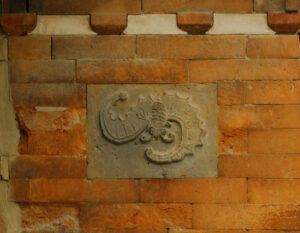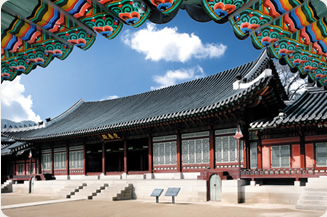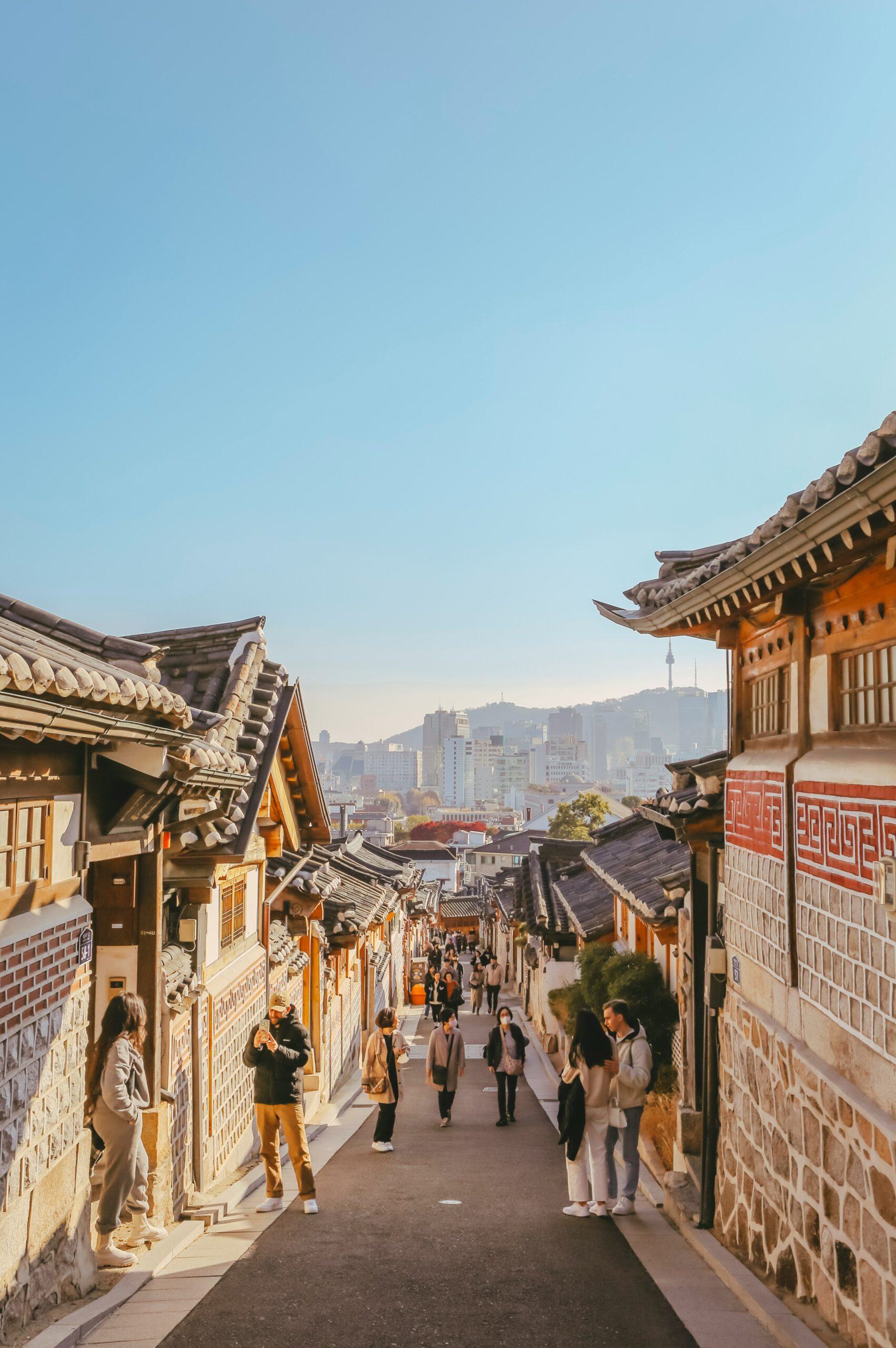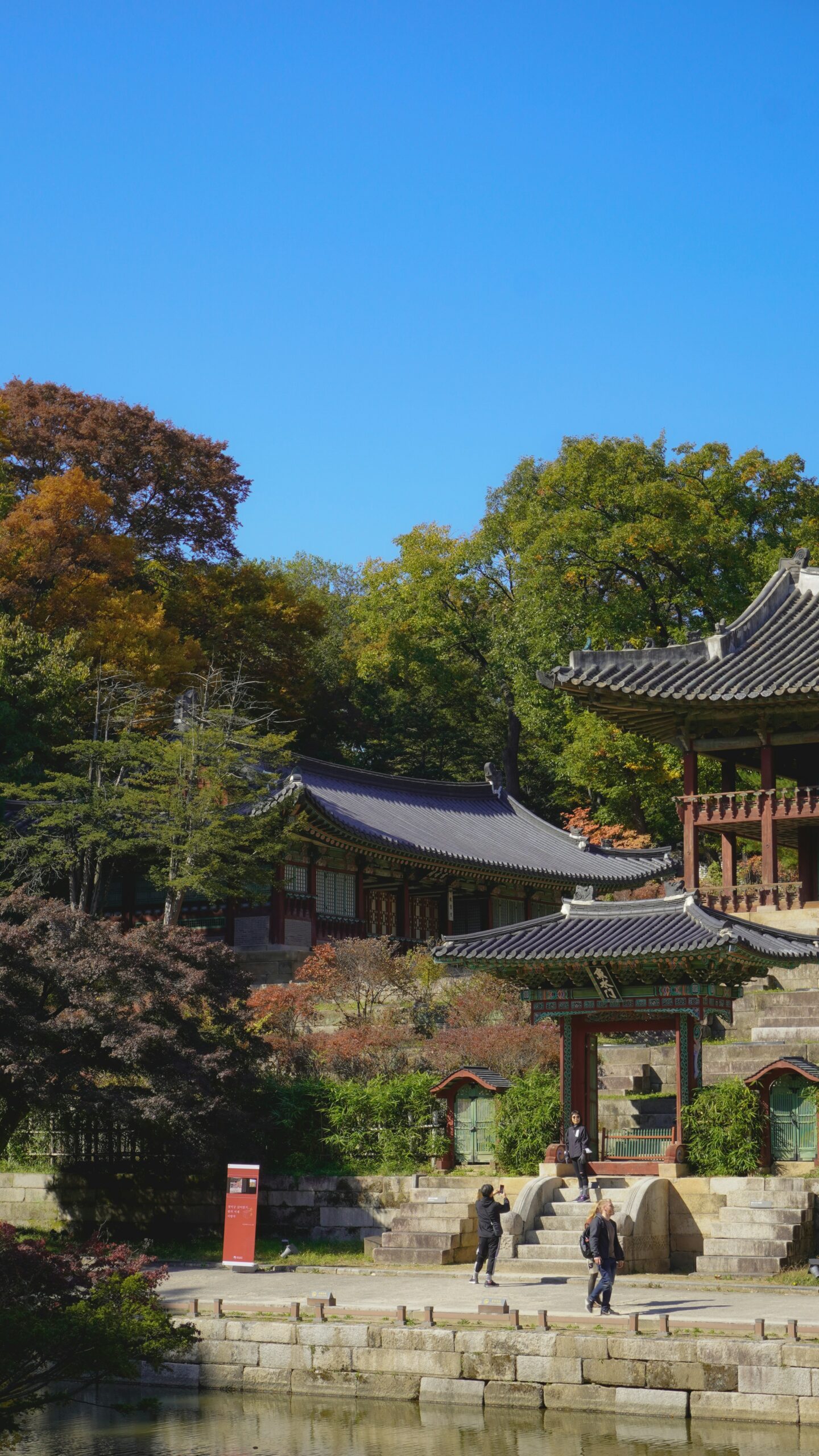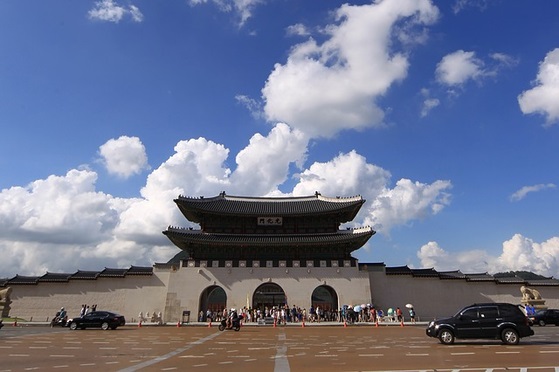Gyotaejeon Hall for a Queen
Gyotaejeon (교태전) was used as the queen’s residence. As the highest female authority at Gyeongbokgung palace, the queen played a critical role in teaching proper Confucian conduct for all women at the palace. In some cases, she was directly involved in politics as one of the king’s aides. Among the given responsibilities to the queen, producing princes is the most important mission that she must complete. In other words, it is also a place to produce a crown prince who will become the next king. The name of Gyotaejeon hall literally presents how the mission was significant. It means ‘harmony of yin and yang’, which indicates giving a great birth to a crown prince with yin (queen) and yang (king) in harmony.
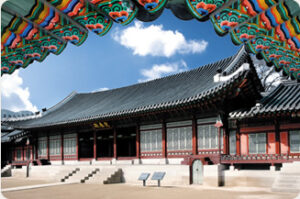
-Amisan Chimney (아미산 굴뚝)
Let’s explore Amisan, a small mound with a chimney at the back, crafted exclusively for the queen, who rarely ventured outside the palace after marriage. The queen was able to see the changes of the four seasons and attracted songbirds in her area of Gyeongbokgung palace. Since the Ondol, the Korean traditional heating system, was installed at Gyotaejeon, chimneys that smoke came out were naturally required. The ventilation purposes aside, the chimneys stand out for their aesthetic value, with diverse patterns including ten longevity symbols and four gracious plants engraved on their walls.
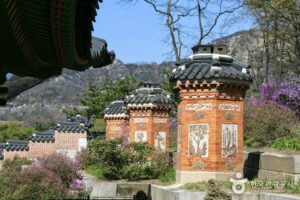
-The selection process for a crown princess who would be the next queen
I would like to give a bit more details about the royal wedding ceremony. Only the ladies of a court (like a queen, the mother, or the grandmother of the king) authorized selecting the crown princess. Becoming queen was not an easy task during the Joseon dynasty. The nomination process involved three strict stages that teenage girls from noble families selected across the country had to pass to first become the crown princess. When the process to select a crown princess was announced, all teenage girls from noble families faced a marriage ban. Thirty candidates emerged, navigating three stringent steps for the coveted title of crown princess. They checked the candidate’s family background, personality, knowledge, wisdom, etc.
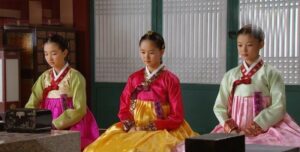
Jagyeongjeon Hall for a Mother Queen (or Queen dowager)
In general, the king’s biological mother was the mother queen (or queen dowager) because the son of the queen of the previous king became the crown prince. However, even if the concubine’s child ascended to the throne, the mother queen was the king’s legal mother. When a young king couldn’t rule, a mother queen became a regent, overseeing state affairs. Even with a king, she held respect as the senior royal unless a grand queen dowager was present.
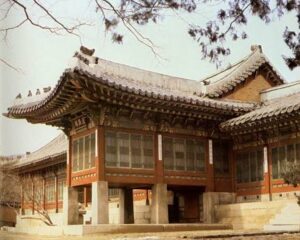
– Jagyeongjeon Chimney (자경전 굴뚝)
When you see the chimney at first glance, you may see it as a wall. Meet the ‘Nati’, a shape resembling a goblin, featuring a beastly face, symbolizing Beoksa’s guardian role against evil spirits. In the center, vibrant patterns depict sun, moon, mountains, water, clouds, and more. These 10 patterns called sipjangseong (십장생) stand for longevity. Jagyeongjeon Chimney is designated as Korea’s Treasure No. 810.
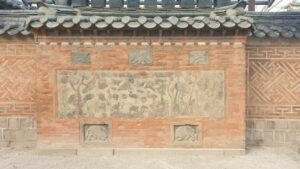
Another thing that’s really interesting about this chimney, there are bats on the side. ‘Bat’ represents blessings since ‘bat’ makes the same sound of ‘luck’ in the Chinese character. Notice the inverted ‘luck(福)’ character on the ceiling when you visit a Chinese restaurant. Bats, symbols of blessings, seem to hang around in this unique space.
